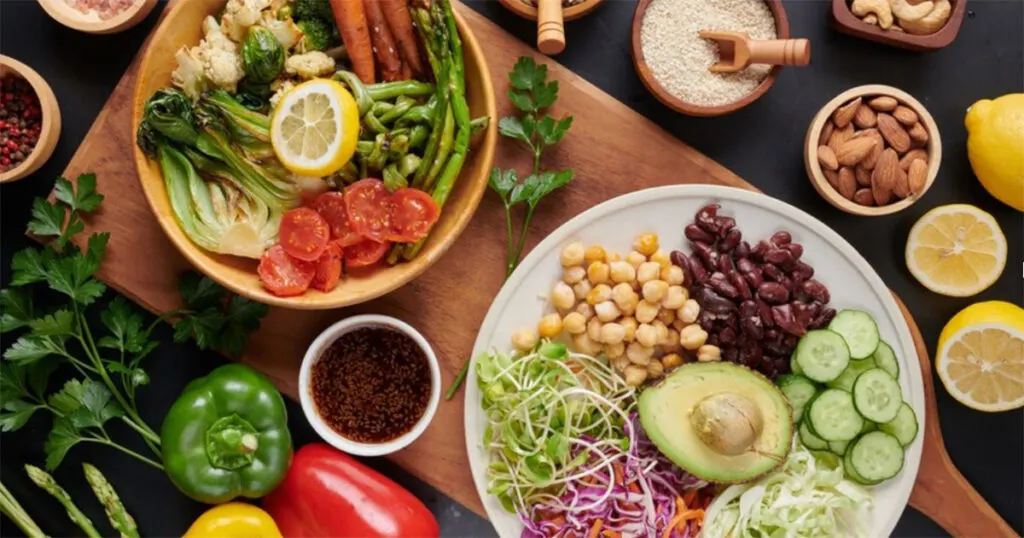In the fight against sciatica and back pain, your diet can be a powerful ally. Certain foods have potent anti-inflammatory properties that can help reduce inflammation, thereby alleviating pain and boosting your overall musculoskeletal function.

By optimizing your meals, you can work towards mitigating discomfort and enhancing overall well-being – without medications or invasive interventions! In this post, you’ll find all the insights needed to navigate the intricacies of anti-inflammatory nutrition, including essential ingredients and must-know recipes. Remember, a shift in daily eating habits can potentially be a game-changer in managing chronic pain!
Let’s Cover The Basics: Essential Ingredients for Your Anti-Inflammatory Diet
Inflammation is a natural physiological response to protect your body from infections and injuries. However, when this response becomes persistent, it can result in chronic inflammation – a detrimental state that can contribute to various health complications, including back pain and sciatica.
These health conditions are extremely common, with about 80% of individuals experiencing back pain at some point in their life. And, when you are also battling chronic inflammation, you’ll notice that it will exacerbate nerve irritation and pain.
Fortunately, you can tackle this inflammation right from your plate. Numerous foods have been seen to have anti-inflammatory properties, offering protection to your body cells from oxidative stress and impairing inflammatory processes. Let’s look at the food groups to introduce into your diet below.
Omega-3 Rich Foods to Combat Inflammation
Omega-3 fatty acids, prevalent in fish such as salmon and in flaxseeds or walnuts, have excellent anti-inflammatory properties. Incorporating these foods into your diet can curb production of molecules linked to inflammation, thus mitigating symptoms of sciatica and back pain.
Plant-Based Foods, Whole Grains, And Olive Oil: Your Source Of Polyphenols
Polyphenols are natural compounds found abundantly in plant-based foods, whole grains, and olive oil. They possess strong anti-inflammatory effects by halting inflammatory pathway activation and reducing oxidative stress – a key contributor to inflammation.
Colorful Fruits and Vegetables: Your Allies in the Battle Against Inflammation
Packed with antioxidants, fruits and vegetables can neutralize inflammatory free radicals in your body. A diet rich in these can significantly alleviate inflammation while also promoting heart health. Plus, the affordability of these items makes it easy to fuel your body nutritiously without breaking the bank.
Anti-Inflammatory Recipes to Alleviate Sciatica and Back Pain
If you suffer from persistent back pain and sciatica, it is important that you have it checked by a professional: your back pain may stem from complications like disc herniation, which require medical attention. However, if your doctor confirms that your pain is a matter of high levels of inflammation, establishing a diet rich in the food groups seen above can help. If you need inspiration, get started by experimenting with the recipes below:
- Grilled Salmon with Avocado Salsa: This dish, originally from Nordic cuisine, combines heart-healthy, omega-3-rich salmon with a refreshing avocado salsa on top.
- Mediterranean-style Green Lentil Salad: Originating from the Mediterranean, this recipe combines protein-rich lentils, a fantastic source of polyphenols, with vibrant veggies for a colorful, anti-inflammatory meal.
- Quinoa with Roasted Vegetables: A popular choice for vegetarians, this dish is loaded with anti-inflammatory whole grains (quinoa) and a mix of antioxidant-rich, roasted vegetables.
- Cold-pressed Olive Oil Drizzled Whole Grain Pasta: An Italian classic, this dish utilizes whole grain pasta, generously drizzled with cold-pressed olive oil, showcasing polyphenols’ anti-inflammatory benefits.
- Berry Delight Smoothie: A versatile option for breakfast or snack, this smoothie blends heart-healthy, antioxidant-packed berries for a quick, inflammation-fighting boost.
Bottom Line: Collaborate with Nutrition Professionals for Optimal Health Outcomes
While incorporating anti-inflammatory foods can be transformative for managing sciatica and back pain, each individual’s nutritional needs may vary. A nutritionist can assess your dietary habits, lifestyle factors, and specific health concerns to guide you towards a personalized anti-inflammatory diet plan.
Remember, embarking on the journey towards better health through nutrition is a step-by-step process, and the guidance of a seasoned dietitian can make this journey both more effective and enjoyable!
